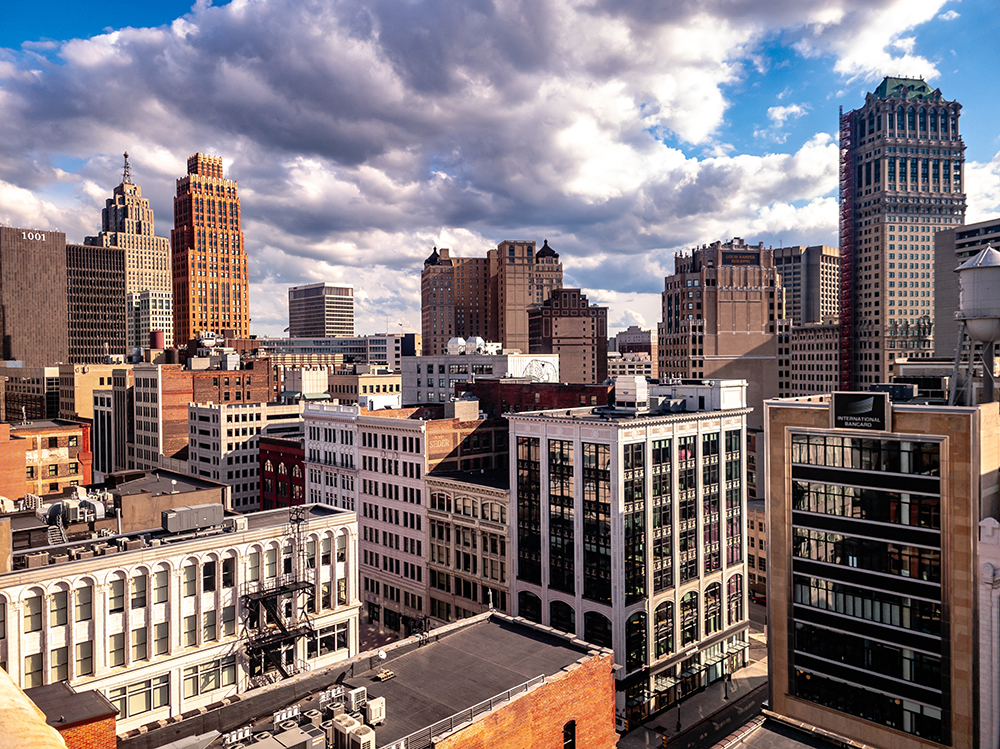Photographing the city around you in its various forms and taking the time to enjoy your surroundings is one way to make the most of living in an urban environment. The city offers many opportunities for interesting shots that can be taken in just about any season.
In this article, we’ll discuss some tips for photographing city landscapes and architecture.
Vantage Points
Elevation is a great way to add perspective and make your photos more interesting and unique. Find a high vantage point for your city photography and shoot down at the cityscape below, or use an elevated position to capture the tops of buildings in the distance. You may want to include some foreground elements like trees or people in your urban photography!

Building Framing
When it comes to framing city landscapes, there are a few things you should keep in mind. First and foremost, symmetry is key in city photography. If you want your shot to look balanced and professional, consider making sure that the buildings in your frame are symmetrical. This can be done either by positioning yourself so that one side of the building aligns with another building across from it or by using objects like trees or people as dividers between two sides of a structure.

Secondly, remember that not all buildings have straight lines–or even straight sides! So don’t feel like every building has to fit perfectly into its own little square box; experiment with different angles until you find something unique and interesting for your city photography.
Weather for city photography
The weather can have a big impact on the quality of your landscape and city photography, so it’s important to know what to expect.
Sunny and clear
This is ideal for shooting city landscapes as there will be plenty of light and no clouds blocking any views of the sky. However, it is important to lower your ISO and speed up your shutter. This will help you to keep your city photography from becoming washed out by the bright sunlight.

Cloudy
If there are clouds in the sky then they will reflect light back onto the sky. This also means that shadows will be softer because less direct sunlight is hitting the city. Look for colors and contrasts to make the pictures pop and to avoid having a boring grey sky in the background. Due to the lower light, hold the camera steady, and increase the ISO, so the pictures don’t come out blurry. Try different angles to get interesting pictures. Move around to get different perspectives.

Rain
Photographing a city on a rainy day can be a unique and exciting experience. To capture great photos in these conditions, it’s important to find the right spot. Look for covered areas, like a balcony or a covered walkway, to protect the camera from the rain. Once you find a good spot, take some time to explore the surroundings. This will help you find interesting angles and perspectives for city photography on a rainy day.
When taking pictures on a rainy day, it’s important to focus on the details. Look for reflections in puddles or on wet surfaces. These can add depth and texture to your images. You can also take close-up shots of raindrops on leaves or flowers, or zoom in on buildings and people to capture their unique features. By paying attention to the small details, you can create stunning photos that capture the beauty of the city in the rain.
Another important element to consider when photographing a city on a rainy day is color. Look for bright colors and contrasts that can stand out against the gray backdrop of the rain. For example, bright umbrellas or colorful storefronts can add a pop of color to your images.
Sunrise and Sunset
One of the most important elements of city landscape photography is timing. You’ll want to be out with your camera at sunrise and sunset when the sun is low on the horizon and casts a warm glow over everything in its path. The ideal sky for sunrise and sunset photography happens when there are some clouds in the sky. The light will be soft and beautiful as the sky darkens. However, too many clouds will block out the sky, so picking the right day for sunrise or sunset photography is important.

Timing is equally important. This is because you will only have a short window of time each day to capture beautiful city photography at sunrise or sunset. If you happen upon an especially colorful sunset, try setting up some shots with different exposures. This allows you the opportunity to blend them together later in post-processing.
Camera Settings in city photography
To get the best cityscape shots, you’ll need to consider your camera settings. The most important factors are shutter speed, aperture, and ISO.
Shutter speed
Shutter speed controls how long your camera’s sensor is exposed to light. You can use this setting to create different effects: a fast shutter speed will freeze motion in bright conditions; a slow shutter speed will blur movement or create interesting abstract patterns when photographing moving water or traffic lights at night.
Aperature
Aperture refers to the size of an opening inside your lens that allows light into your camera. It controls how much depth-of-field you have within its range of focus. This determines how much of an image appears sharp. Aperture also affects exposure by determining how much light reaches each pixel on your sensor–the wider open this opening is (lower f number), more light gets through. Conversely, if the aperture is closed down (higher f number), less photons hit each pixel resulting in darker images overall.
ISO
ISO is a setting on a camera that helps the camera see in the dark. When it gets dark outside, it’s harder for a camera to take a good picture. But with a high ISO, the camera can see better in low light.
ISO works by making the camera’s sensor more sensitive to light. Think of it like turning up the volume on your radio. Just like how you can hear the music better when the volume is turned up, the camera can “see” better when the ISO is turned up. But, there’s a trade-off. The higher the ISO, the more “noise” or graininess there can be in the picture. So, photographers need to find a balance between having enough light and having too much noise in their pictures.
Equipment

To capture beautiful and professional urban landscape photos, you will need the right equipment. A good camera with a wide-angle lens is essential to capture the scope of the cityscape. A tripod can help stabilize your camera and keep it steady during long exposures. A remote shutter release can also be helpful to minimize camera shake. Additionally, it’s important to consider the weather conditions and bring appropriate gear, such as a rain cover, to protect your camera and lenses.
Editing
Photo editing is an important step in bringing out the best in your city photography. The first thing to do is to adjust the exposure to make sure the photo is not too bright or too dark. Then, use the contrast and clarity tools to make the correct elements in your photo pop. Adjusting the saturation and vibrance can make colors look more natural and vivid. It’s also important to straighten any crooked lines in the photo, as well as crop out any unwanted parts of the image. Finally, using tools like spot removal or the clone stamp can help remove any distracting elements from the photo. With a little bit of editing, you can turn a good city landscape photo into a great one!

